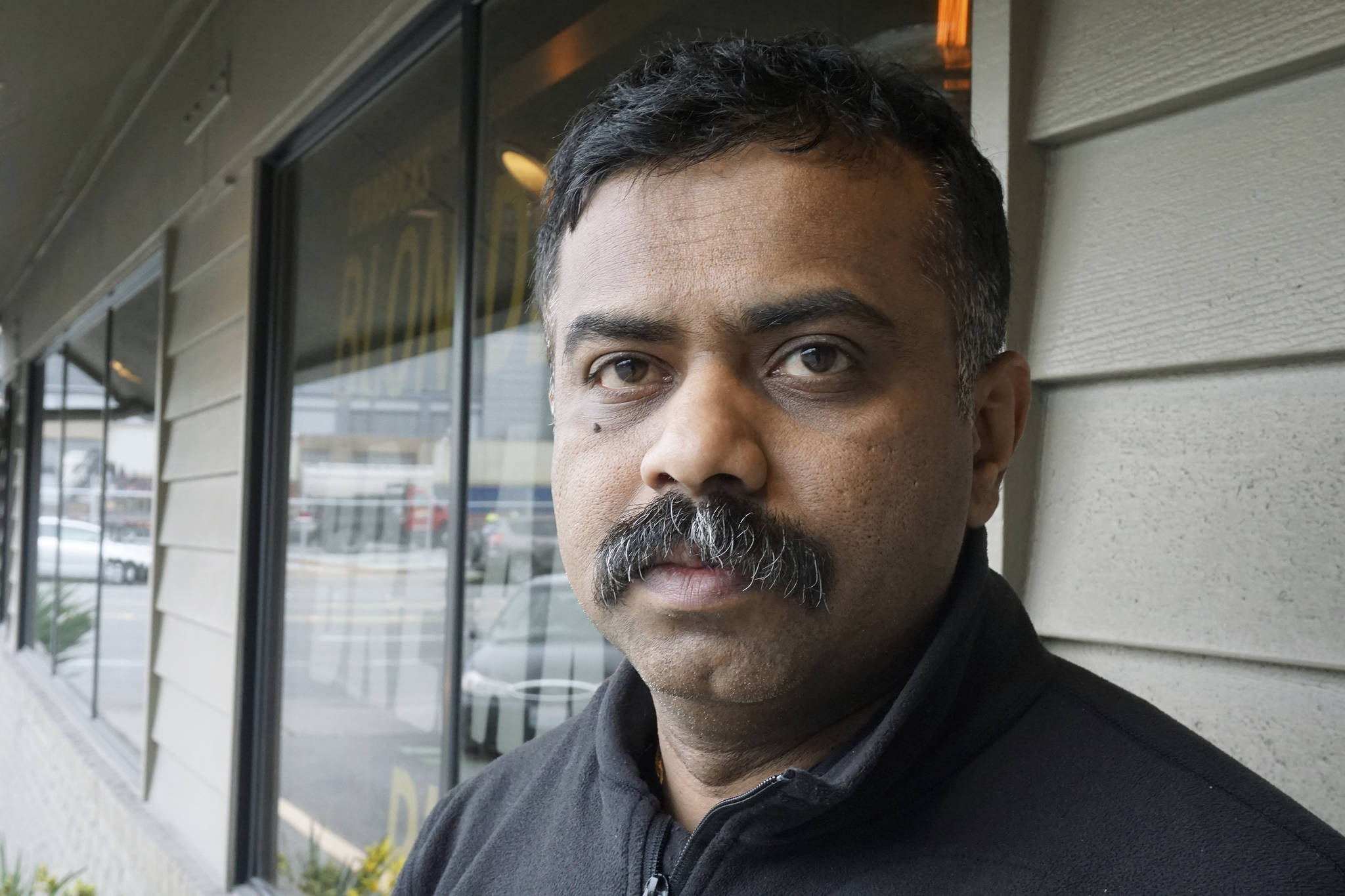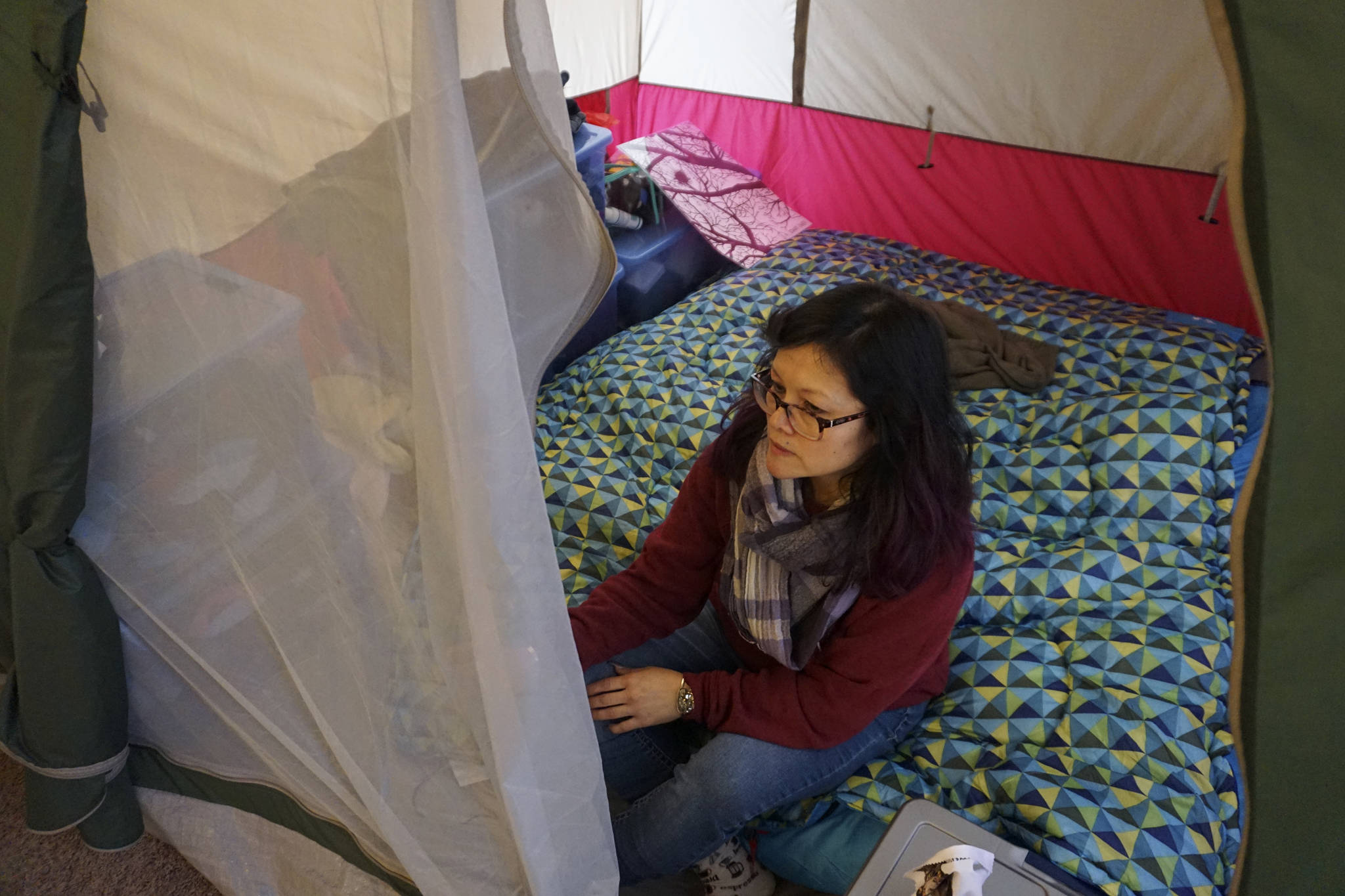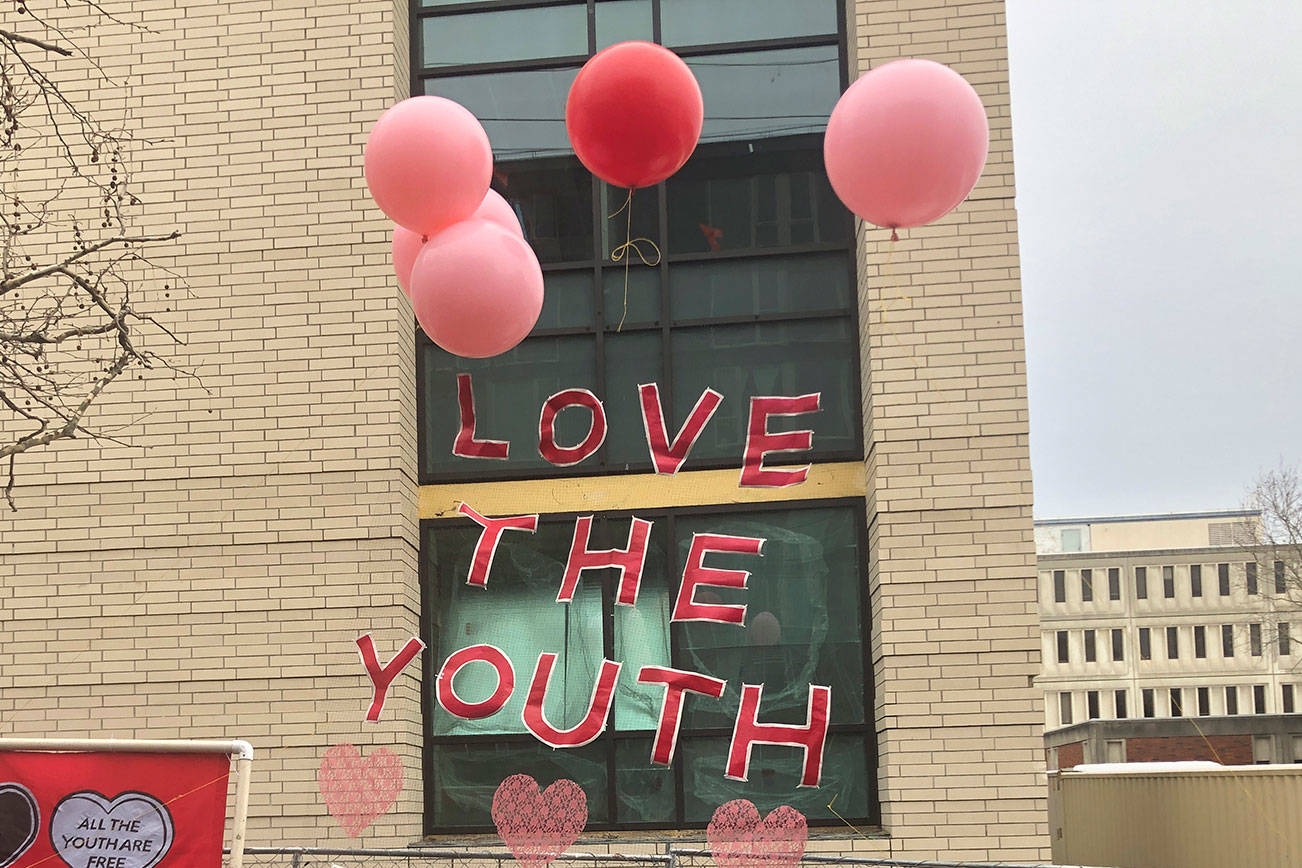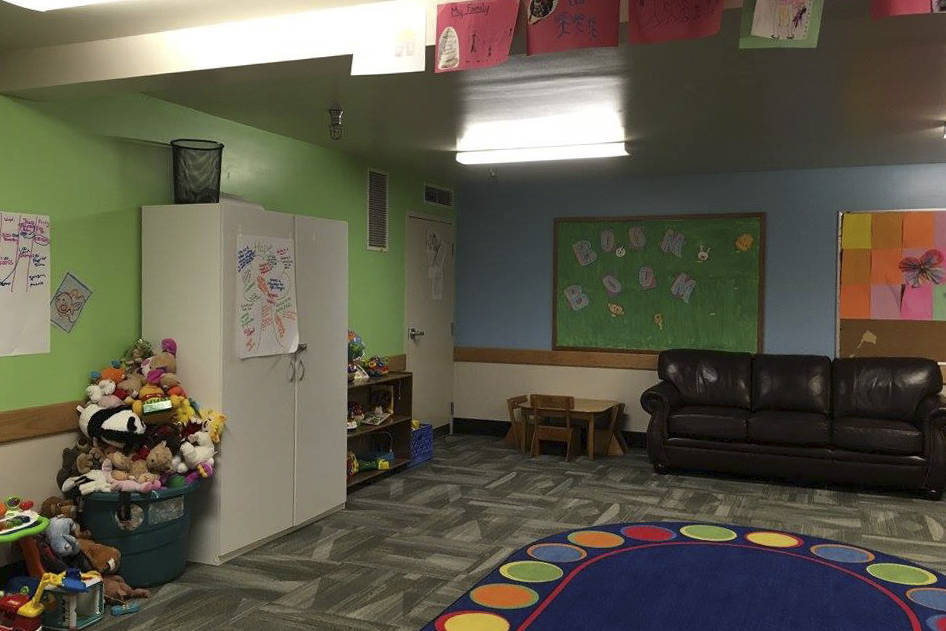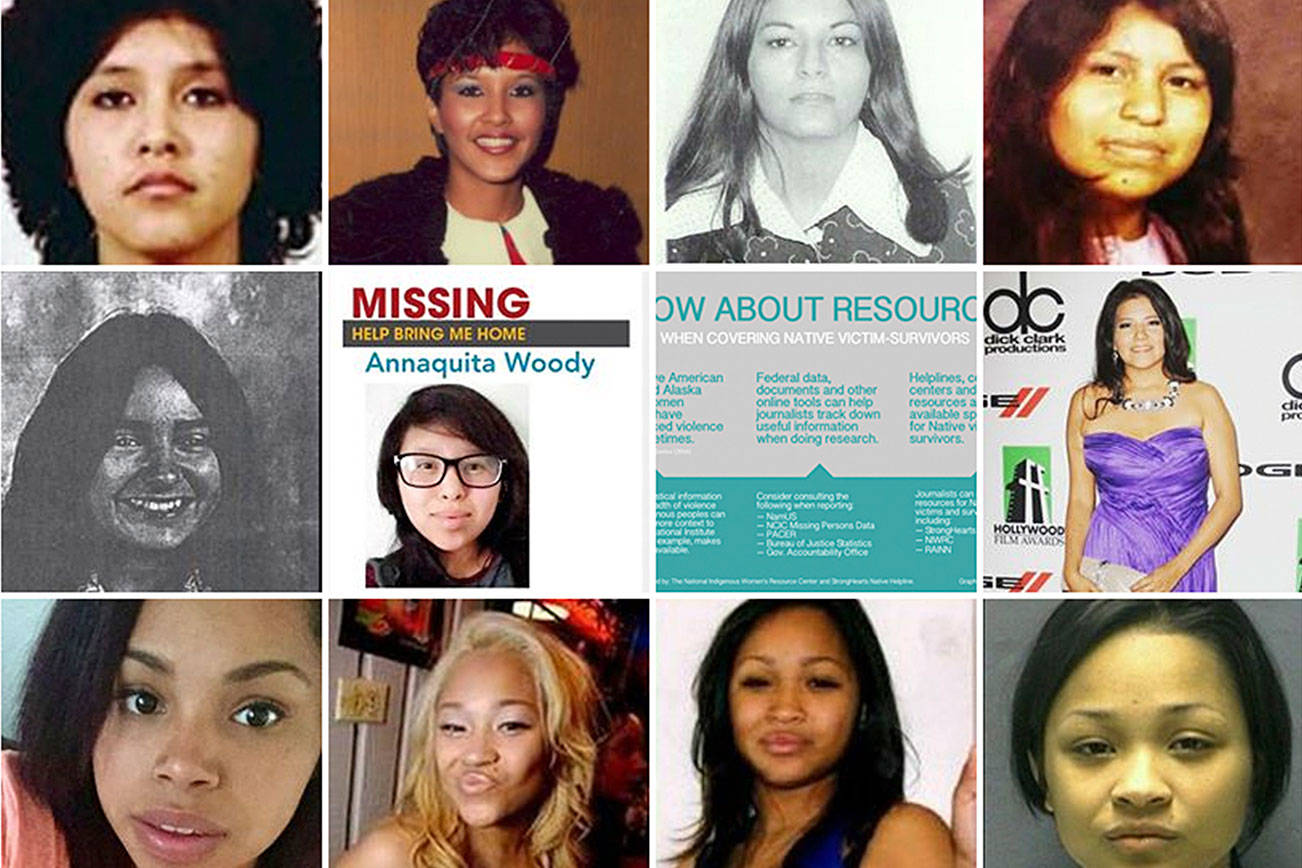In late December, Vikas and his wife sat in their Vancouver, B.C., hotel wracked with uncertainty. Although they had renewed their visas several times before and were only about 20 miles from the U.S. border, Vikas wondered if they would ever return to their Redmond home. It usually only takes the consulate in Vancouver about three days to approve their visas, but this time Vikas and his wife bounced among Airbnbs and hotels for three weeks as they waited without an official word.
Originally from southern India, Vikas (whose name was changed to protect his identity) was issued a H-1B—a three-year visa for highly-skilled workers in specialty jobs—through Microsoft beginning in 2008. But this time, the rigmarole of leaving the country to renew his permit every three years was finally starting to wear on the 37 year old.
In addition to waiting an inordinate amount of time to renew his visa, Vikas’s wife has run into issues of her own. She is on a H-4 dependent visa, which allows her to work. But in 2017, she only got a two-year extension instead of the usual three-year one. Last year, the Trump administration announced that it planned to stop issuing work permits to the spouses of H-1B visa recipients. A decision about the matter from the Department of Homeland Security is still pending, but she could lose her privilege to work by the end of this month.
Every other February, Vikas begins the nearly yearlong process of gathering paperwork, consulting with Microsoft’s lawyers, and planning to leave the country to activate his new work permit. Because of the law’s technicalities, he cannot simply get his visa stamped while on U.S. soil. The ritual has taken a psychological toll, like preparing for a dreaded holiday. It’s made him feel trapped in a constant limbo, and the uncertainty has prevented him and his wife from starting a family.
“Every time you leave and apply for it, you’re at the mercy of the consulate or the officer of whether they want to give you the visa or not, even though nothing’s changed. Same job. Same position,” he said exasperatedly. And then when he returns to the U.S. after stamping his visa, he’s inundated with a barrage of questions from U.S. Customs and Border Protection for an hour. “Why do you keep renewing your visa? Why don’t you get a green card?” he said they ask him. “And then I have to explain to them that I’ve been waiting for one for nine years now.”
Like thousands of Indians who come to the Seattle area for tech jobs, Vikas is stuck in a green card backlog, and it could take him decades to move to the front of the line. Created in 1990, the H-1B program allows U.S. employers to hire highly skilled foreign workers for three years, but those who have applied for their green cards can renew their visas indefinitely. According to the United States Citizenship and Immigration Services (USCIS), the per-country limit for immigrants to receive green cards is capped at 7 percent. This creates a bottleneck for Indian and Chinese workers who are among the highest rate of applicants. USCIS officials contacted through email were unable to determine how many highly-skilled Indian workers are waiting for their green cards in Washington. But GC Reforms—a national group of Indians advocating for employment-based immigration reform—said that over 300,000 are currently waiting on their employment-based green cards throughout the country, about 30,000 in Washington alone. Plagued by the long wait times and uncertainty, Vikas and his wife are considering moving to Canada or another country where they’d have better chances of becoming permanent residents. “Why would we want to invest even more here, when there’s so much uncertainty?” Vikas retorts.
The federal government grants green cards based on a series of eligibility requirements and quotas that give preference to immigrants sponsored by family members. In 2016, 64,687 Indian immigrants received green cards, a total trailing only immigrants from Mexico, China, and Cuba, according to a U.S. Department of Homeland Security annual flow report released in December 2017. But a 2017 Pew Research report showed that only 14 percent of 2015 green cards went to employment-related categories, including the families of workers. This means that only about 9,000 Indian workers and their families are given green cards per year. That number pales in comparison to the 65,000 high-skilled Indian workers who applied for green cards in 2016, according to U.S. Department of Labor data. But because of a 7 percent cap per country, only about 5,600 green cards are issued to high-skilled Indian workers per year. Based on the current trend, Vikas anticipates that high-skilled Indian workers who applied in 2016 won’t become permanent residents until 2106, unless the per country cap is lifted.
High-skilled workers from India also risk becoming undocumented if they overstay their visas. “It’s always running in the back of our minds,” Vikas said. If he is terminated from his job as a financial director at Microsoft, he has up to 60 days to find another gig. “Even though we have a home here—I’ve lived here longer than I have at any other place in my life—and yet, when I leave the country until I get a green card, I’m at the mercy of some fairly random criteria to come in. It works most of the time, but it also doesn’t work sometimes.”
In 2014, Indians composed the highest undocumented population within Washington’s Asian-Pacific Islander community, according to five-year census data estimates compiled by University of California, San Diego Associate Professor of Political Science Tom Wong. At the time, there were 13,573 undocumented Indians in the state, with the largest concentration in the greater Bellevue area. However, Wong was unable to determine how many of the undocumented were workers who came over on H-1B visas.
An even greater concern for GC Reform members is that the children of H-1B visa holders, those on the H-4 dependent visas, will be forced to leave the country or become undocumented when they age out of the program at 21. The group estimates that about 40,000 children are at risk of aging out of the program and losing their status throughout the nation.
Although F5 Networks employee Lokesh Marenayakanapalya’s 7-year-old daughter is a U.S. citizen, his lack of citizenship limits her opportunities. For instance, she’d like to start her own business centered around healthy food options for public school kids in five years. “Whenever she says that she wants to be an astronaut, she wants to be a scientist, she wants to do something on her own … I cannot encourage her,” he lamented. “It really hurts me.”
Marenayakanapalya’s own ambition is also stifled by the long wait for his green card. He moved to King County from Bangalore, India in October 2007 to work for AnuData Inc. and for better career opportunities; in short, to pursue “the American Dream.” His H-1B visa is now connected to F5 Networks Inc., where he works as a software engineer. Although he started his green card process in August 2012, he anticipates that it will take 40 years to get permanent residency. Because his status is connected to his current employer, Marenayakanapalya is unable to parlay his 15 years of tech experience into creating the software company of his dreams. As a result, Marenayakanapalya struggles with anxiety and has difficulty focusing at work sometimes. It’s suffocating. “It is literally [like] being left in a free space with handcuffs on … It is like putting a bird in the cage,” he blurted out. “You can’t do anything. I mean, you’re tied to an employer even though you have ideas, even though you know that you are capable of creating jobs.”
Yet, Marenayakanapalya admits that he’s lucky in comparison to other Indian workers who are abused by their employers. He knows a few consultants in the area with H-1B visas who work 10-15 hours per day without getting paid overtime. They feel trapped in their jobs, and fear retaliation from their employers, who are their only ticket to citizenship.
A tragedy last year helped crystallize the helplessness that he and others in the backlog feel. Last spring, his 33-year-old friend unexpectedly passed away from a heart attack, and his wife who was on an H-4 visa, returned to India to perform the final burial rites. Although she’d worked as a photographer in the area for several years and volunteered heavily in the community, she was unable to return to America after her husband’s death because her visa was connected to his H-1B. “We come across these situations every now and then where it’s heart-wrenching to see that they’re undergoing a loss of their partner, but they will have to uproot everything and leave because of the visa issue,” Marenayakanapalya said.
The issue has caught the zeitgeist of the national media, with outlets from the Washington Post to PRI’s The World covering the issue this month. On Feb. 3, about 200 Indians on H-1B visas demonstrated in front of the White House to show their support of Trump’s merit-based immigration system. They encouraged him to clear the green card backlog that they contend is obstructing their pathway to citizenship. Fear has also heightened as the Department of Homeland Security considers regulatory changes that would prevent foreign workers from extending their H-1B visas while they await their green cards.
Although the immigration conversation of late has mostly focused on the Deferred Action for Childhood Arrivals (DACA) program, some politicians have suggested reforming the high-skilled visa system too. Last month, Republican Senators Orrin Hatch and Jeff Flake introduced legislation that would increase the annual cap on H-1B visas by 20,000 and expand the number of visas up to 195,000 to meet demand. Moreover, it would remove the per country quota on employee-based green cards.
Tech companies are largely in support of the legislation and eliminating the green card bottleneck. Microsoft President Brad Smith wrote in a January 2018 blog post that the bill would allow business to retain foreign talent.
“High-skilled immigration has not only been important to the success of Microsoft and other individual tech companies, but in the global leadership position of the entire American tech sector.” Smith wrote. “Our collective success won’t continue unless Congress reforms the nation’s immigration system into one that protects American workers while preserving the ability of American companies to continue to recruit the world’s best high-skilled talent. If Congress could move forward and diminish the many uncertainties in the green card process, we could then focus even more effort on our work creating next generation technology.”
Amazon didn’t respond to repeated requests for a comment on H-1B.
U.S. Rep. Pramila Jaypal of Seattle also spoke of a need to clear the green card backlog as part of comprehensive immigration reform. Jaypal wants the per country caps to be eliminated and to ensure that H-1B visa holders have protections. “Right now, they’re sort of subject to the whims and fancies of their employer, and if their employers decide that they’re not going to keep them anymore then they lose their status,” she warns. “What we want to do is to try to make these visas transferrable amongst employers so that you’re getting approved but you’re not being held hostage by one company.”
In the meantime, Marenayakanapalya and Vikas have taken matters into their own hands by joining GC Reforms to spread awareness about the green card backlog. Every week, about 20 core members meet at public libraries or other locations to discuss legislation and call politicians. Sometimes they invite their kids to discuss aging out of the program, and educate new arrivals about the long wait times for permanent residency. On Feb. 25 at 2:45 p.m. at Bellevue Downtown Park, GC Reforms will rally to discuss employment-based immigration reform and clearing the green card backlog.
But more than anything, these Indian laborers offer camaraderie and emotional support to those who are dejected because of the limbo that they’re stuck in. “We tell them that there is hope, that we can do this,” Marenayakanapalya said.
mhellmann@seattleweekly.com
